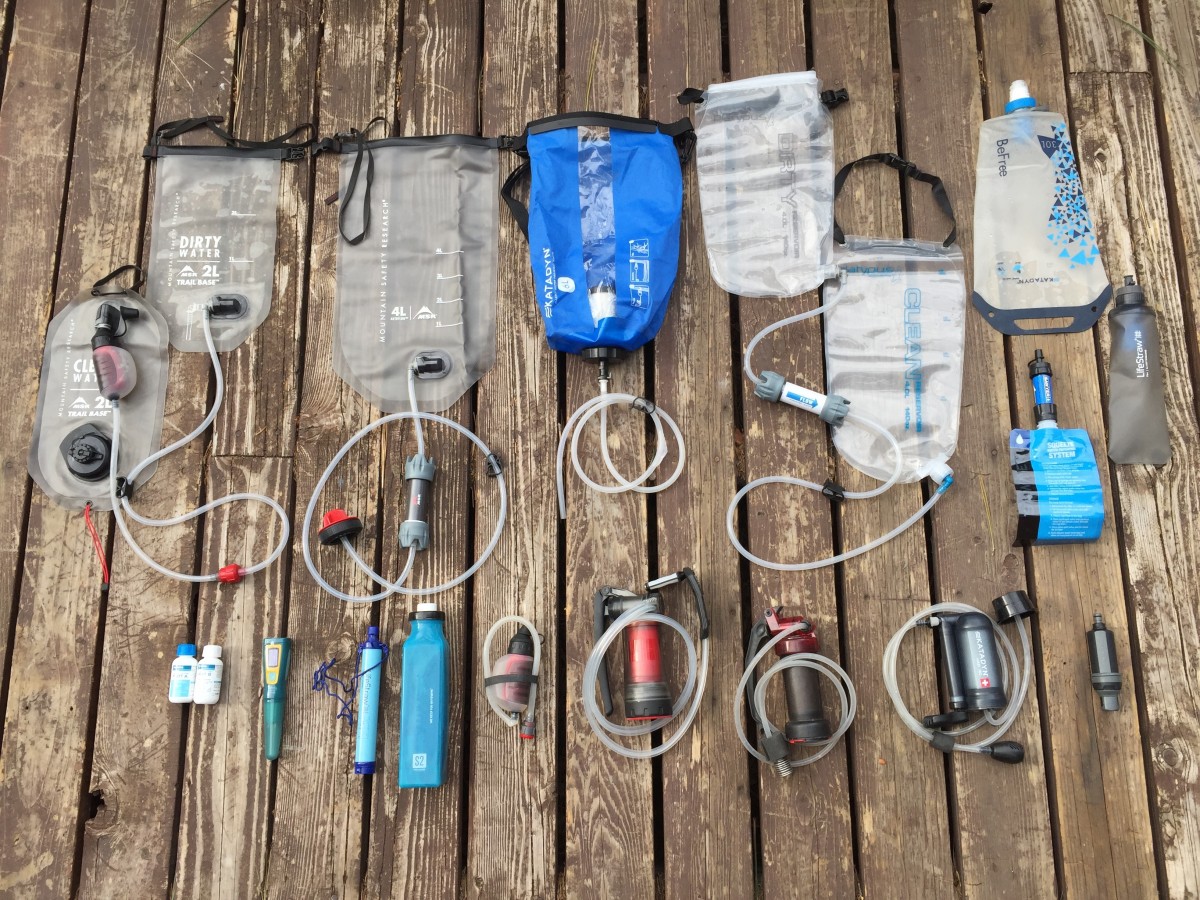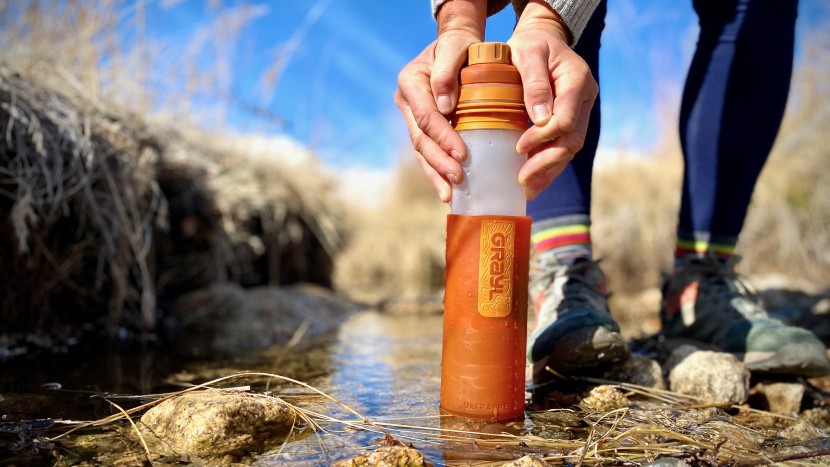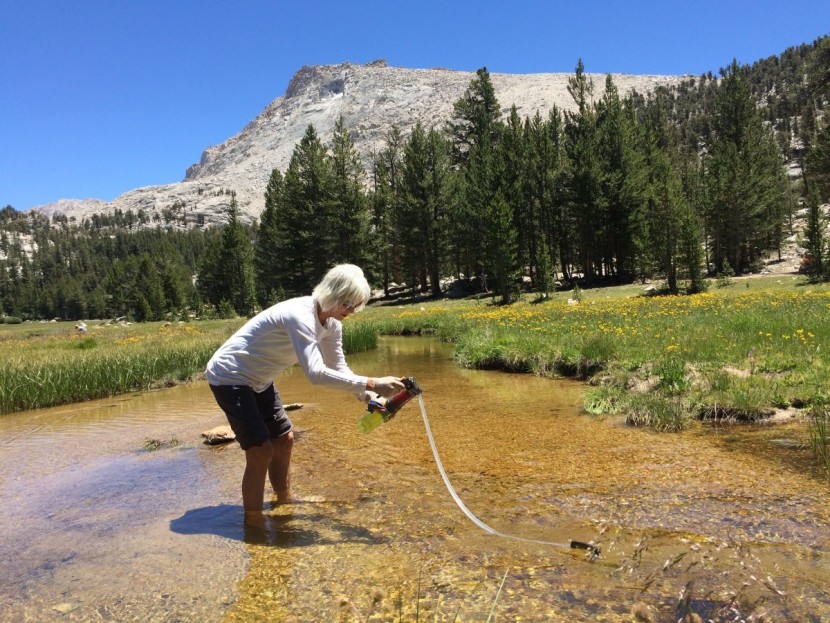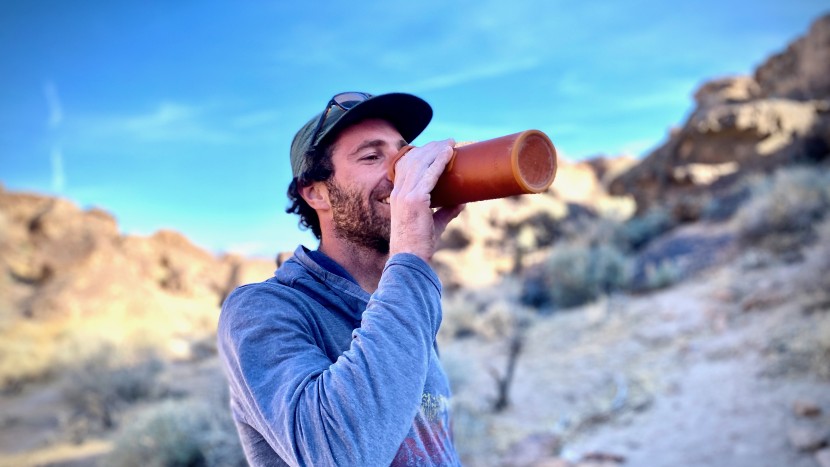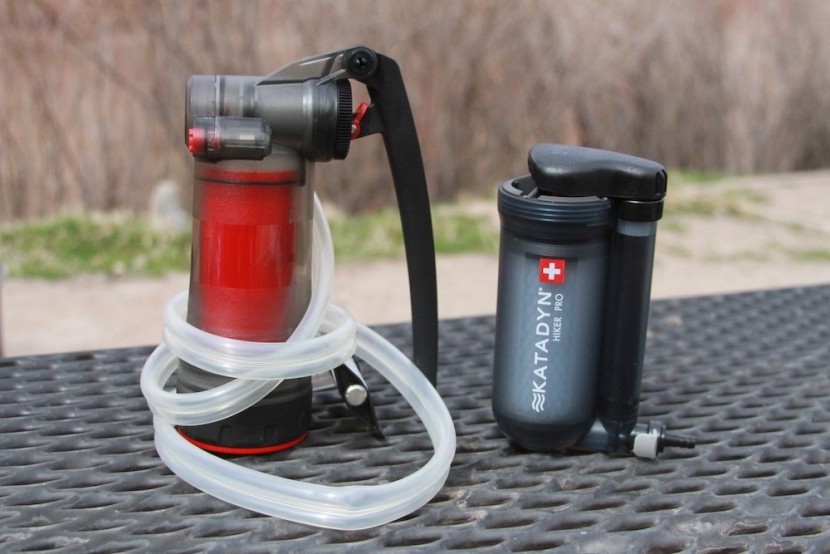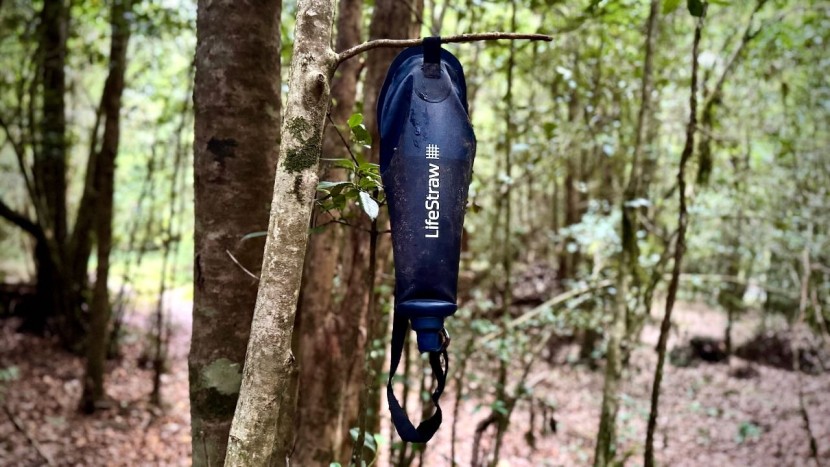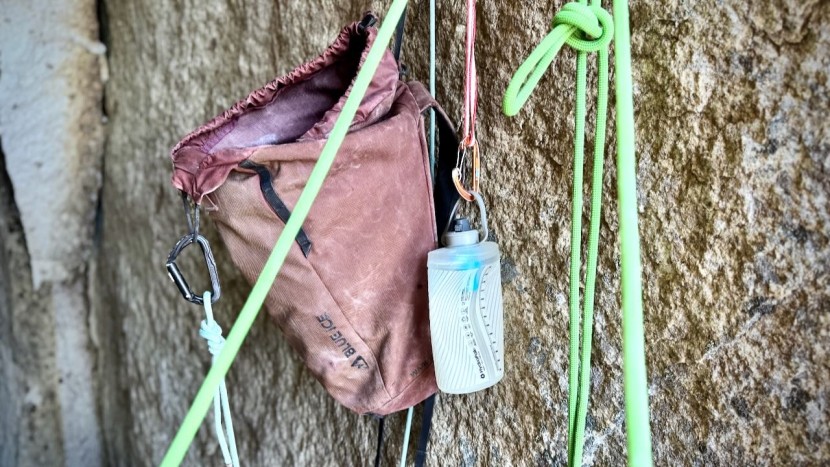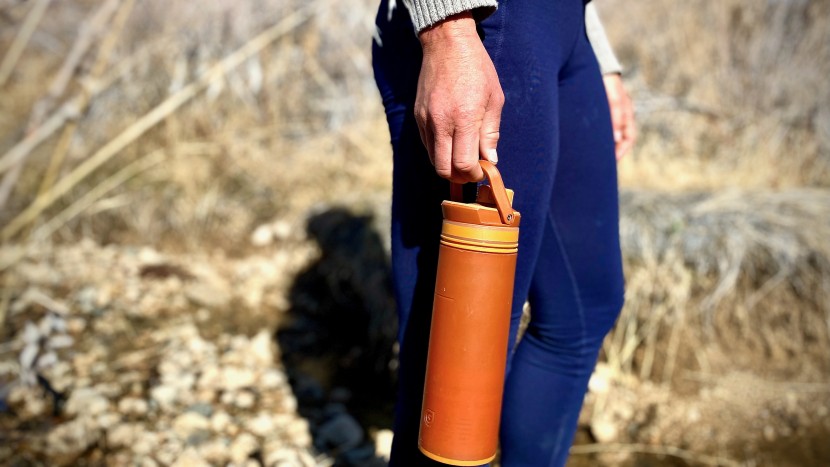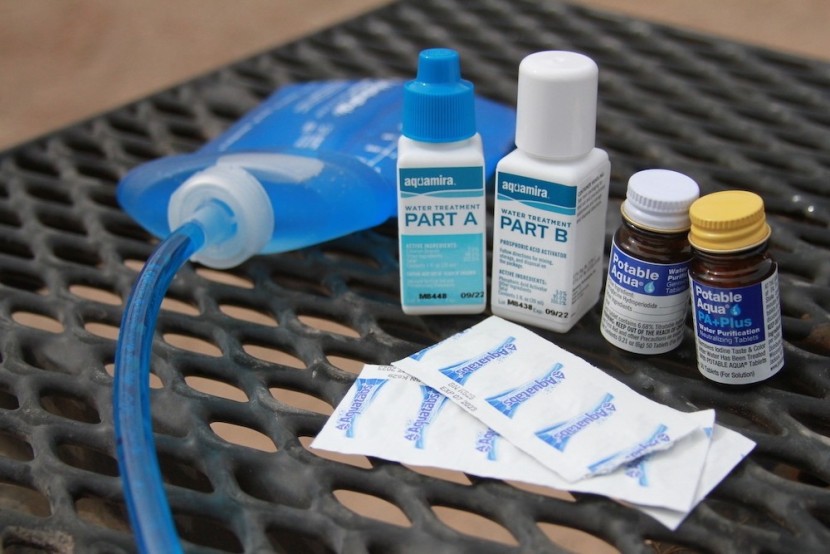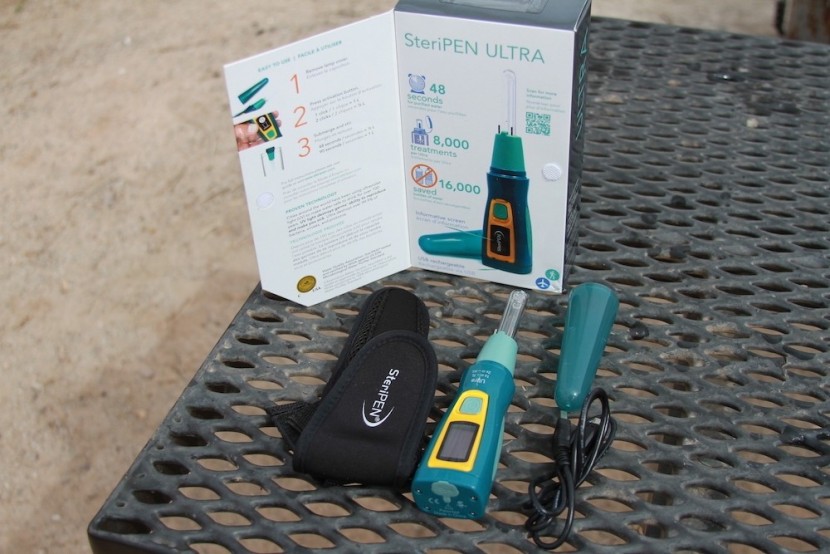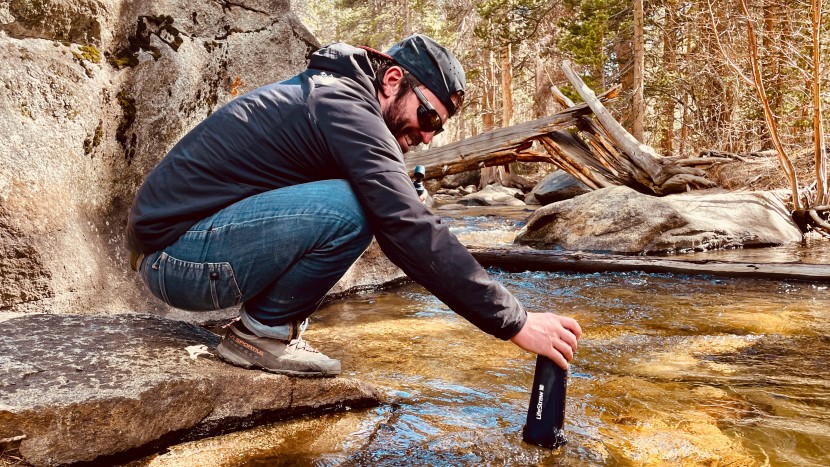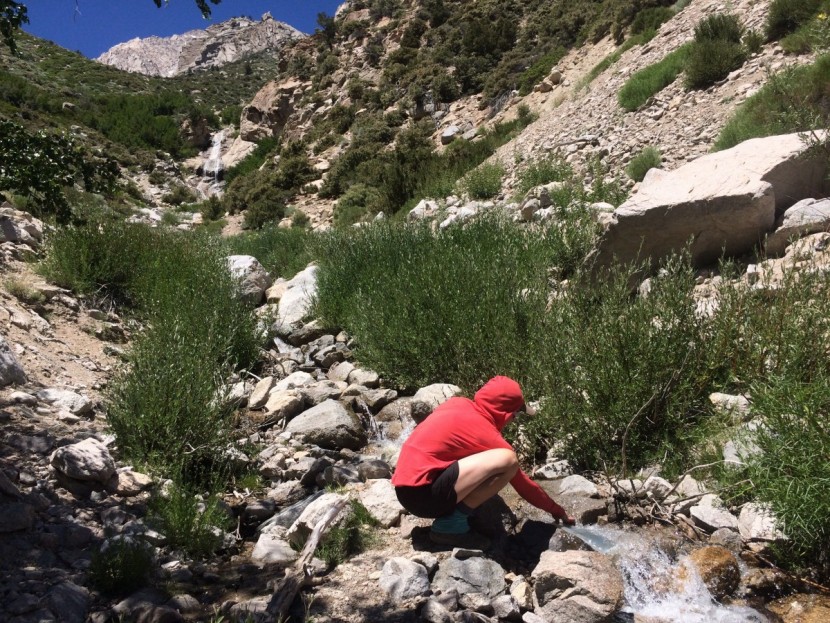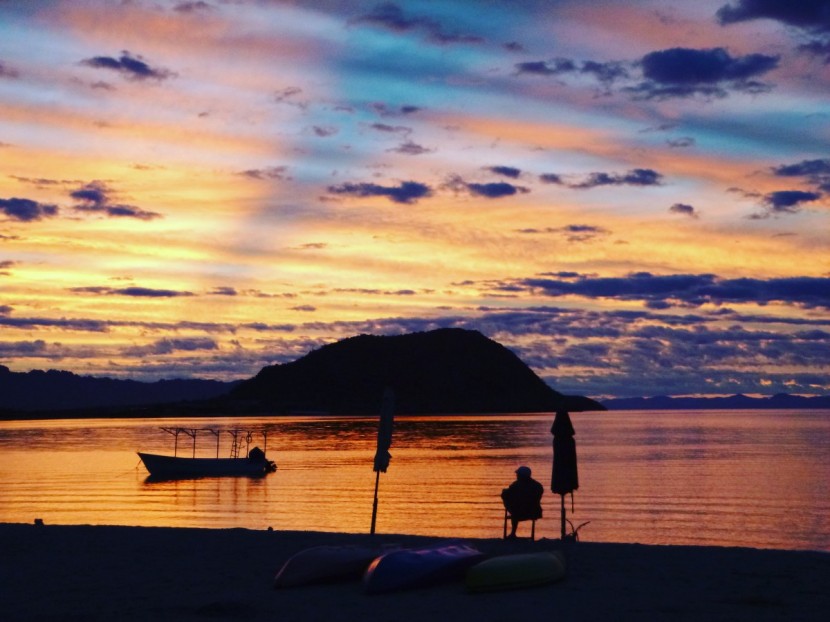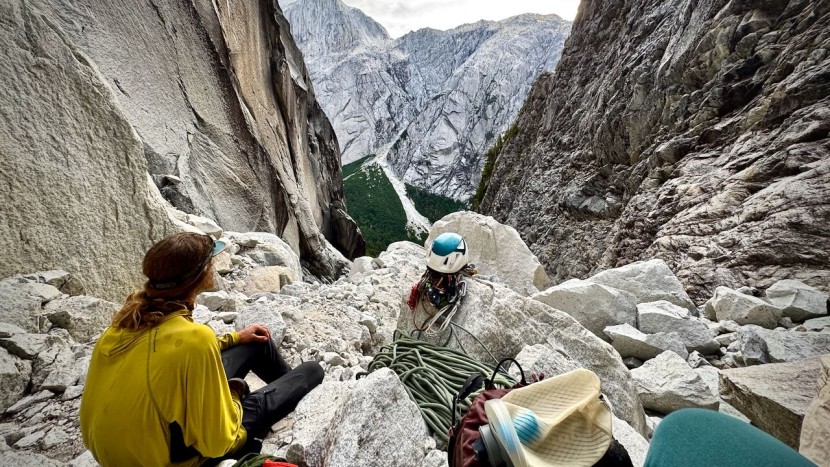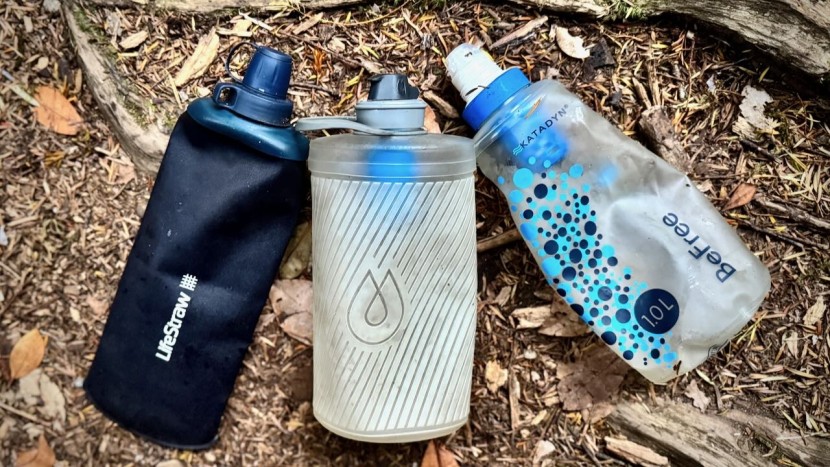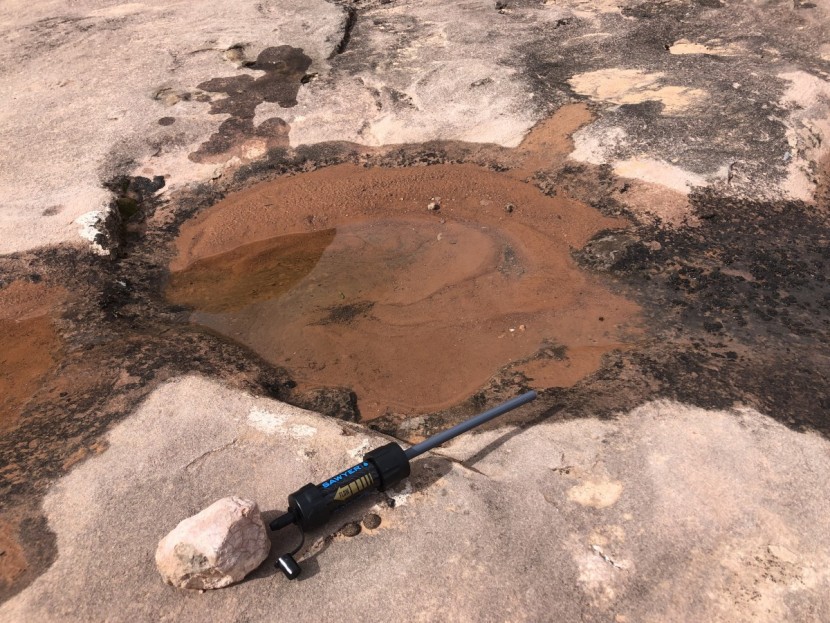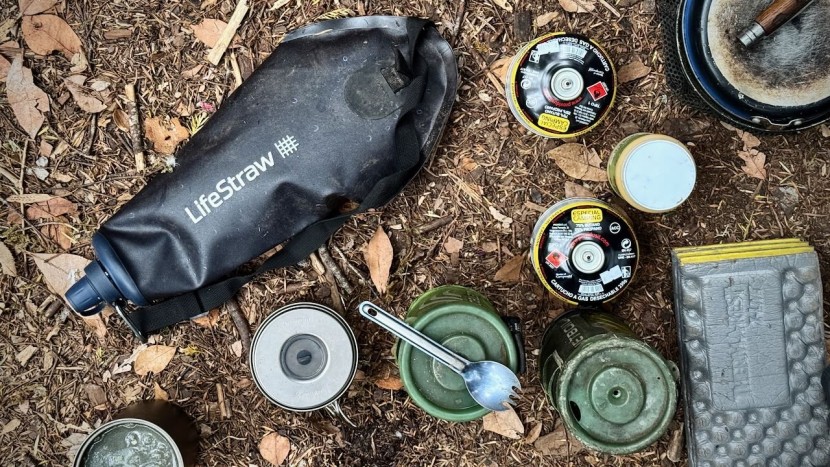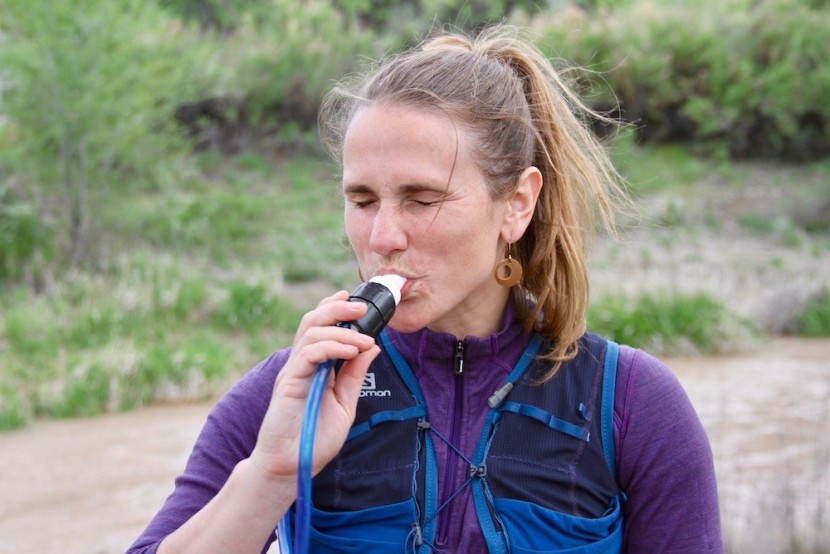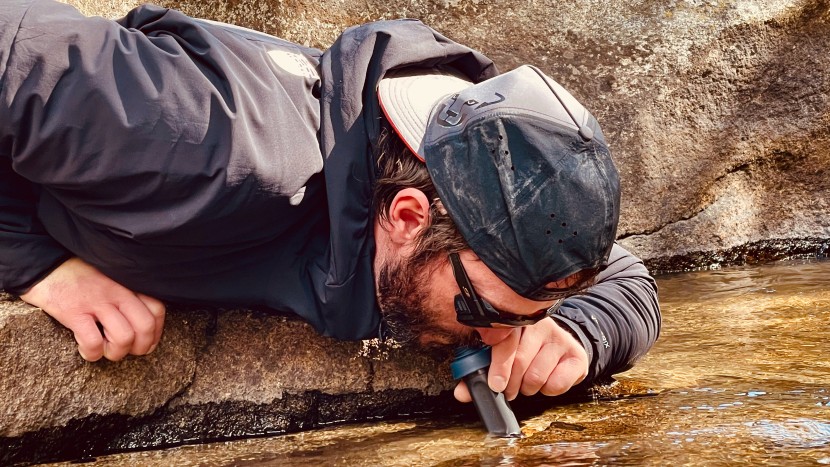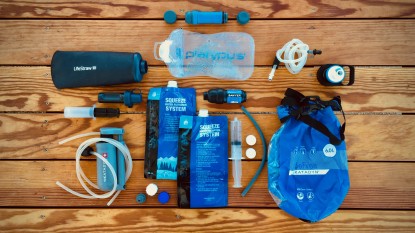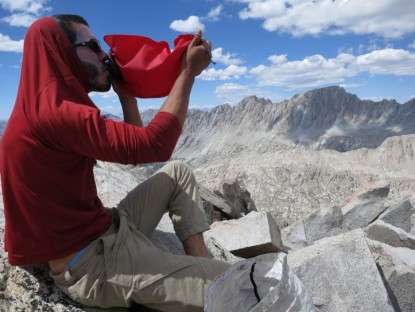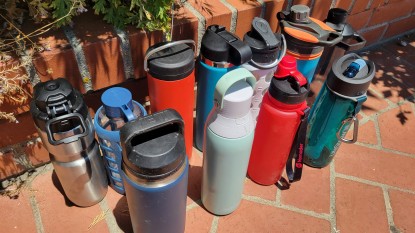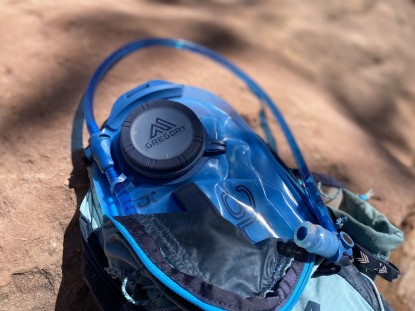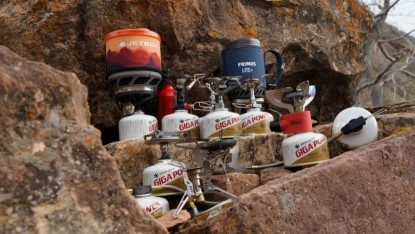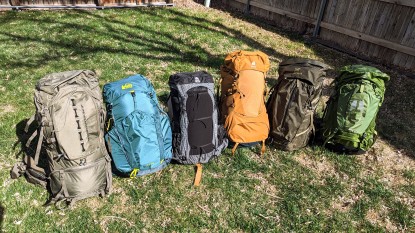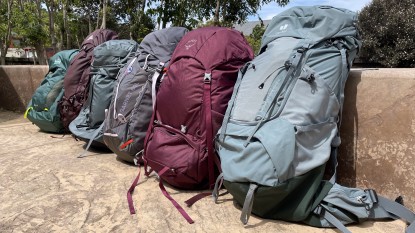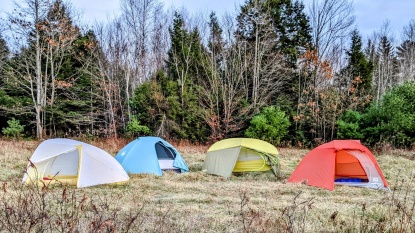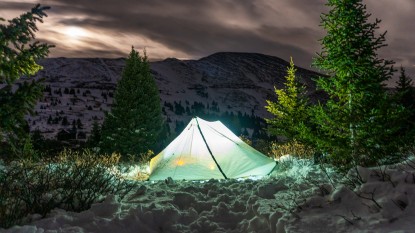Water is the essence of life. Our bodies are largely made up of water, and sufficient hydration is imperative to ensure safety and longevity at home, on the trail…anywhere. Carrying all the water you need can be exhausting and unnecessary when you're out exploring either in the front or backcountry. Snow, streams, lakes, ponds, rivers, and spring seeps are all water sources. Unfortunately, not all backcountry water is safe to drink. The easiest solution is to carry a water filter or purification system to protect you from harmful pathogens. But before buying, it's important to know what to look for and buy a product that offers the conveniences you need based on how you prefer to travel.
Water Treatment
Contaminants invisible to the human eye float in different water sources. Bacteria and protozoan cysts like Giardia and Cryptosporidium are the largest concern in North America. In developing nations, more serious viruses like Hepatitis A may be present. What you can eliminate depends on your treatment system. So what treatment systems exist, and what do they remove?
Purifiers vs. Filters
Purifiers differ from filters in technical effectiveness. When looking at different products, note if it is called a purifier or filter. Below, we outline the differences in what each removes.
Filters
This system mechanically pushes water through a filter, straining out bacteria and protozoa based on size. It does NOT kill viruses. These are fine to use in North America, but be cautious while traveling abroad, where viruses might be problematic.
Purifiers
Purifiers are a system approved for eliminating viruses, bacteria, and protozoa. These can be used anywhere in the world and are ideal if traveling abroad where waterborne viruses are a common problem.
Types of Water Filters and Purifiers
There are several systems out there for filtering or purifying water. All the types fall into one of the six categories listed below. Below, we outline the pros and cons of each system and what each is ideal for. Categories include pump filters, gravity filters, on-the-go systems, bottle filters, chemical treatment, and UV light.
Pump Filters
These are widespread and are what people usually think of when considering water treatment. These devices cleanse water by pumping it through a filter with a pore size that is too small for microorganisms to get through. You can find both filters and purifiers in this category.
Pros: Reliable, reaches all types of water sourcesCons: Takes time to pump, requires maintenance
Best Uses: Groups of 1 - 2 people, all types of water sources, backcountry travel
Gravity Filters
These products cleanse water using gravity to push it through a filter, eliminating time-consuming pumping.
Pros: Easy and fast, versatile uses, in-line filter compatibility, ample storage capacityCons: Typically need something to hang the system from; lacks on-the-go travel options
Best Uses: Small to Large Groups, base camps, backpacking, medium to abundant water sources
On-The-Go Systems
These models treat water as you drink it directly through a big straw, through a filter itself, or attaches to a compatible squeeze bag or bottle. The water is filtered as you sip, powered by your sucking force or by squeezing a small reservoir it comes with. These filters come in all forms.
Pros: Lightweight, fast & easy, super-duper packableCons: Water flow is usually not very fast, water storage requires another vessel
Best Uses: Lightweight travel missions, solo-use, all types of water sources
Bottle Filters
This system uses a filter built into the bottle. Working like a French press, you push the water through the system. The bottle is your filter and your drinking reservoir. Alternatively, the filter is in the bottle, and you drink right through it.
Pros: Lightweight, no additional parts, packableCons: Hard to filter by pressing
Best Uses: Travel, short backpacking missions, solo use.
Chemical Drops and Tablets
Drops and tablets purify water by adding a chemical to it. They have the advantage of killing viruses, bacteria, and most protozoa. However, many treatments do not kill Cryptosporidium, a common pathogen in North America. As a result, this treatment is ideal in conjunction with a filtration system that can remove it.
Pros: Lightweight, inexpensive, kills most pathogensCons: Long treatment time, adds a taste to the water, doesn't remove particulates
Best Uses Emergency treatment, lightweight missions, all water sources, solo to group use.
UV Light Purifiers
These mechanical devices purify water by zapping it with ultraviolet light. This scrambles the DNA of these invisible pathogens, not allowing them to reproduce. As a result, the water is clean and safe to drink.
Pros: Quick and easy to use, purification systemCons: Doesn't remove particulates, needs battery life, generally unreliable
Best Uses: Travel to international countries
Effectiveness of Pathogen Removal
The world we live in is well-traveled by all sorts of potential sources of contamination. Sources of water pollution are diverse and wide, ranging from fecal matter from both humans and animals to chemical contaminants, a function of dirty industrial practices, all over the world. We've previously thought that getting away from civilization meant drinking pristine water, free of contamination, without filtration.
However, times are changing. Remote backcountry routes are seeing more traffic than ever before, making it even more critical that you treat your water. In general, it's easy to identify sources of contamination. If you see other humans, mountain goats, or other big animals around, you might be at risk, as their fecal matter can get into pristine sources, transmitting pathogens. If you travel internationally, assume water should be treated to be safe. So what can affect you? Below, we outline pathogens to be aware of and which systems are effective against them.
Water Pathogens
Bacteria: E. coli, Shigella, and Campylobacteriosis, as just a few examples, can also live in water. These are the easiest pathogens to filter out and treat. Bacteria are larger than protozoans and about 10 times the size of a virus.
Removed by: All systems of filtration and purification
Protozoa: This group includes the most commonly feared of all waterborne illnesses - Giardia and Cryptosporidium. These single-celled parasitic organisms cause serious intestinal problems, with symptoms appearing anywhere from two days to two weeks from ingestion. These organisms can live in cold water for weeks or months at a time. Cryptosporidium has a hard, protective outer layer, which makes it resistant to many types of water treatment. Filters with an absolute pore size of 0.2 microns can eliminate these organisms.
Both Giardia & CryptosporidiumRemoved by: Chloride Dioxide Drops (Aquamira Drops) (not other chemical treatments), UV light, Filters with a pore size smaller than 0.2 microns.
Giardia but NOT CryptosporidiumRemoved by: Other types of chemical treatment (i.e., Iodine tablets, Sodium dichloroisocyanurate)
Viruses: Examples include Hepatitis A and Rotavirus. Viruses are not considered a significant threat when hiking and traveling in the U.S. and Canada, but they become a much larger concern on international trips. Viruses are tiny, so they are not strained out with most filters unless their pore size is as small as 0.02 microns. Purification systems are the only ones that can remove these.
Removed by: Chemical treatment, UV filters, purification filters (w/ a pore size smaller than 0.02 microns), Ion Exchange Technology (Used in Grayl Purifiers)
Leave No Trace
To ensure that you're not adding to the contamination of water sources in your favorite exploration location, there are a few easy Leave No Trace (LNT) rules to follow:
- Poop 200 meters from any water sources — If you are going to be leaving a fine gem in the backcountry, it's important to make sure you are far away from water sources. Fecal matter could be carrying bacteria or harmful pathogens.
- Bury your poop — Carry a small shovel with you and bury your waste about 8-inches deep. This isn't a random depth. It's at this depth that hungry bacteria are looking to decompose your waste, which will ultimately return it to the Earth more quickly. If it is any shallower than this, your waste will sit there, with potential for contamination, for a longer period.
- Wash your hands after using the bathroom — To avoid getting sick, wash with soap and water, especially if you're cooking for a group of people.
Follow these simple rules, and you'll be tending to the health of those around you and yourself.
User Considerations
When purchasing a filtration or purification system, several other factors must be considered. Below, we outline some things to consider before buying.
Where are you going?
Be sure to research if you are headed off to determine if you need a filtration or purification system. Filters are typically much cheaper and will work for most adventures in North America. However, if you're keen on international travel, a purification system is probably a better option for your kit.
What are you doing?
Based on your activity, you might choose a different water filter. For example, a fast packer looking to shed the most ounces will make a different choice than somebody who is car camping where weight doesn't matter the most. Below, we outline some activities and provide some recommendations.
Backpacking or Expedition Climbing: Given that you are carrying everything with you, you will want to consider the weight and packability of all your items. Thru-hikers taking on 1000's of miles may opt to go with a super lightweight chemical treatment that can kill most things.
However, if you're just out for a few days and traveling with a large group, you can split the water filtration system, which weighs a few more ounces. In that case, you may consider a highly efficient and fast filtration system.
Fastpacking or Trail Running: It's all about going light. In this case, we'd choose the lightest and safest options. Chemical treatment is a great option here. However, it doesn't yield water quickly, requiring a half-hour wait time. On-the-go filtration units offer better durability and instantly filter water. Look for those with interchangeable bottles, so you can choose which one to squeeze to get water and hold in your hand or hydration vest.
Bikepacking: If you like your current bottle while biking, adaptor kits can fit the bottles you love best. These turn your bottle into a filtration system. They are super lightweight and easy to pack about.
International Travel: Be sure to carry a purification system or chemical treatment when traveling abroad. Since viruses abound in these areas, it's essential to be protected from them.
What are your water sources like?
Before embarking on any trip, it's important to research where your water sources will be and what you can expect of them. Water sources that are few and far between will require additional storage along the way. If you can go from one source to another, you might be all right with an on-the-go system that doesn't need storage. You should also consider the source of your water. If it's a lake, it'll probably run all summer. But if it's Spring snowmelt, it may dry up by Summer or Fall. Consider this when choosing your filter.
Is the water turbid?
This is a serious concern if you plan on traveling anywhere in the desert where sediment is in high concentration. Water with high silt and sediment content will clog filters. It doesn't matter what type of filter or system is used. If you plan a trip to the Grand Canyon and the only source is the Colorado River (one of most swollen rivers in the world), you will run into problems.
How much are you willing to spend?
There are systems out there that range widely in price. Some of the best options are typically more expensive, with their own pros and cons. Chemical water treatment is by far one of the cheapest options, but it comes with the caveat that it'll change the taste of your water, won't get rid of particulates, and requires a waiting period. Other options, like the MSR Guardian, can rise to hundreds of dollars. This is like the Porsche of water filters that can do almost everything. So, what are you willing to invest? Be sure to look at our Best Buy and budget recommendations and compare each model's performance to its price.
What's in your Filter?
In your filter, some filtration media will eliminate microorganisms and other contaminants from your water. Some filters also have activated carbon. Below, we educate you on the different types you might come across in your shopping.
Filter Media
There are many filtration options out there. Here's some information on the different types you might see in your research.
Ceramic: This is an earthen material (yes, the same kind of stuff your favorite coffee mug is made out of) that has a long life and can be cleaned many times before being replaced. Unfortunately, it can get clogged easily. But on the bright side, scraping it clean is easy. Ceramic filters can also come with a carbon core, which helps remove water chemicals.
Fiberglass: A more fragile material than ceramic but still effective at eliminating particles.
Hollow Fiber: Made up of hollow U-shaped microtubes, this filter allows water through tiny pores and into the core, where pathogens are strained out.
Silica Depth: Using finely grained silica sand, this filter works by having multiple levels of different-sized grains, going from largest to finest. It catches different-sized particles and organisms as water is pushed through its levels of density.
Activated Carbon
Activated carbon can be found in many filters and is used to remove other contaminants like pesticides, heavy metals, smells, and the like. If you're concerned about any of these, find an option with activated carbon.
Filter Features
Many different features are found with several filters. For example, some have an awesome storage capacity while others don't. Some have adaptability that allows compatibility between bottles, water bladders, and other in-line systems. We outline what's going on with those below.
Storage
If you're in a place where you need to pump a lot of water because your next water source won't be a few miles away, it's important to look for a filter that can move a lot of water quickly. Gravity filters are the fastest solution to these problems. Some of these systems come with built-in storage with bags that are clearly marked “clean” or “dirty” so you can store your water effectively. Storage may not matter if you're in a place where water is plentiful.
In-line Adaptability
Some filters can literally clip right into a tube line and provide filtration on the go. While these systems are a cool idea, they typically reduce the water flow, rendering them almost useless.
Most in-line adaptable filters can be used with hydration bladder setups and gravity filters. Depending on the filter, you will have varying results for the flow rate from the dirty water bag to your clean reservoir.

